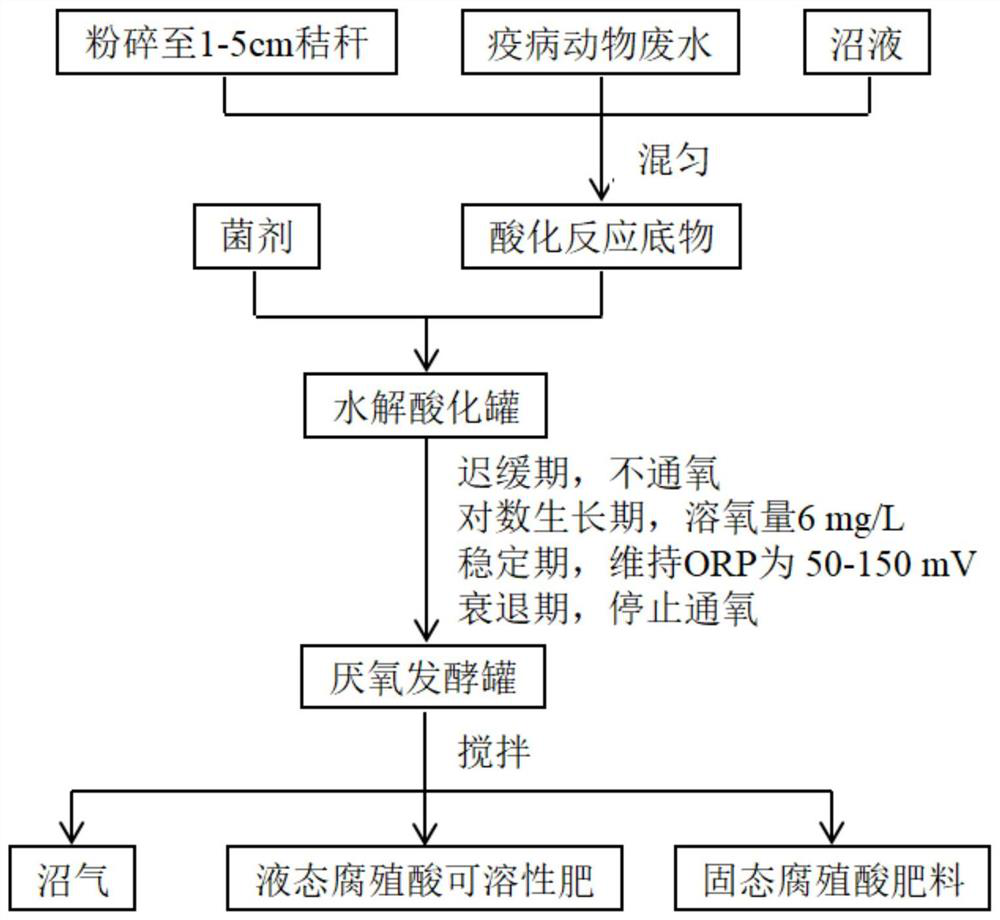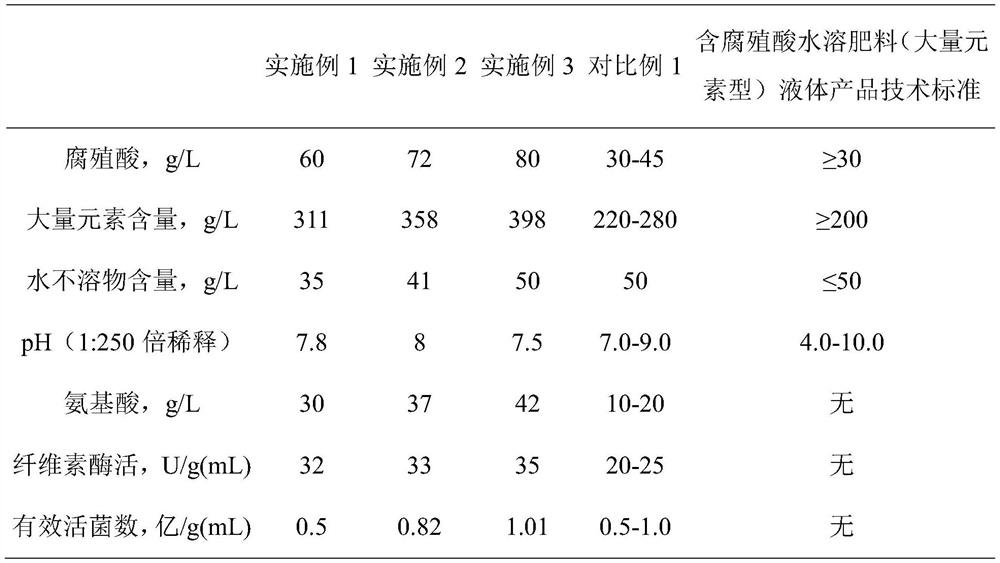Method for treating epidemic disease animal wastewater through aerobic-anaerobic two-step fermentation
A disease and animal technology, applied in microbial treatment, chemical fertilizer treatment control, combined biological treatment, etc., can solve the problems of high energy consumption, insignificant improvement of gas production efficiency, loss of nutrients, etc., to reduce process energy consumption and operating costs , maintain low cost operation, increase the effect of production
- Summary
- Abstract
- Description
- Claims
- Application Information
AI Technical Summary
Problems solved by technology
Method used
Image
Examples
Embodiment 1
[0067] A method for aerobic-anaerobic two-step fermentation treatment of epidemic animal wastewater, comprising the following steps:
[0068] S1. According to the mass ratio of 5.6:1:5.6, mix the epidemic animal wastewater, crushed straw and filtered biogas slurry (TS is about 1%) evenly. The TS of the mixed liquid is 8.3%, and the carbon-nitrogen ratio is 22:1. , place the mixed solution at room temperature for 2-3 days, adjust the pH to 7.0-7.5, and obtain the whole slurry substrate of the acidification reaction;
[0069] S2. Import the whole slurry substrate of the acidification reaction into a hydrolysis acidification tank, and add Bacillus subtilis whose mass is 5% of the total mass of the whole slurry substrate of the acidification reaction, and adjust the dissolved oxygen in stages, at a temperature of 37±1°C Carry out aerobic acidification under the condition; Described regulation and control dissolved oxygen amount in stages is:
[0070] Within 0-4h, do not ventilate i...
Embodiment 2
[0079] The difference between Example 2 and Example 1 is that in step S1, the epidemic animal wastewater, crushed straw and filtered biogas slurry (TS is 1%) are mixed uniformly according to the mass ratio of 4.2:1:4.2, and the mixed solution The TS is 11%, the carbon-to-nitrogen ratio is 30:1, and the mixed solution is placed at room temperature for 2-3 days, and the pH is adjusted to 7.0-7.5 to obtain the whole slurry substrate of the acidification reaction.
[0080] After the aerobic acidification hydrolysis, the pH of the feed liquid is 4.5-6, the volatile acid content is 8000-9000 mg / L, and the acetic acid percentage reaches 50%-55%.
[0081] After the anaerobic fermentation is completed, the methane content in the generated biogas is above 55%, and the VS methane production reaches 230mLCH 4 / gVS.
[0082] The properties of the liquid humic acid fertilizer obtained in this example are shown in Table 1.
Embodiment 3
[0084] The difference between Example 3 and Example 1 is that in step S1, the epidemic animal wastewater, crushed straw and filtered biogas slurry (TS is 1%) are mixed uniformly according to the mass ratio of 3.4:1:3.4, and the mixed solution The TS is 12.4%, the carbon-to-nitrogen ratio is 34:1, the mixture is left at room temperature for 2-3 days, and the pH is adjusted to 7.0-7.5 to obtain the whole slurry substrate of the acidification reaction.
[0085] After the aerobic acidification hydrolysis, the pH of the feed liquid is 4-6, the volatile acid content is 9000-10000 mg / L, and the acetic acid percentage reaches 55%-60%.
[0086] After the anaerobic fermentation is completed, the methane content in the generated biogas is above 55%, and the VS methane production reaches 250mLCH 4 / gVS.
[0087] The properties of the liquid humic acid fertilizer obtained in this example are shown in Table 1.
PUM
 Login to View More
Login to View More Abstract
Description
Claims
Application Information
 Login to View More
Login to View More - R&D
- Intellectual Property
- Life Sciences
- Materials
- Tech Scout
- Unparalleled Data Quality
- Higher Quality Content
- 60% Fewer Hallucinations
Browse by: Latest US Patents, China's latest patents, Technical Efficacy Thesaurus, Application Domain, Technology Topic, Popular Technical Reports.
© 2025 PatSnap. All rights reserved.Legal|Privacy policy|Modern Slavery Act Transparency Statement|Sitemap|About US| Contact US: help@patsnap.com


